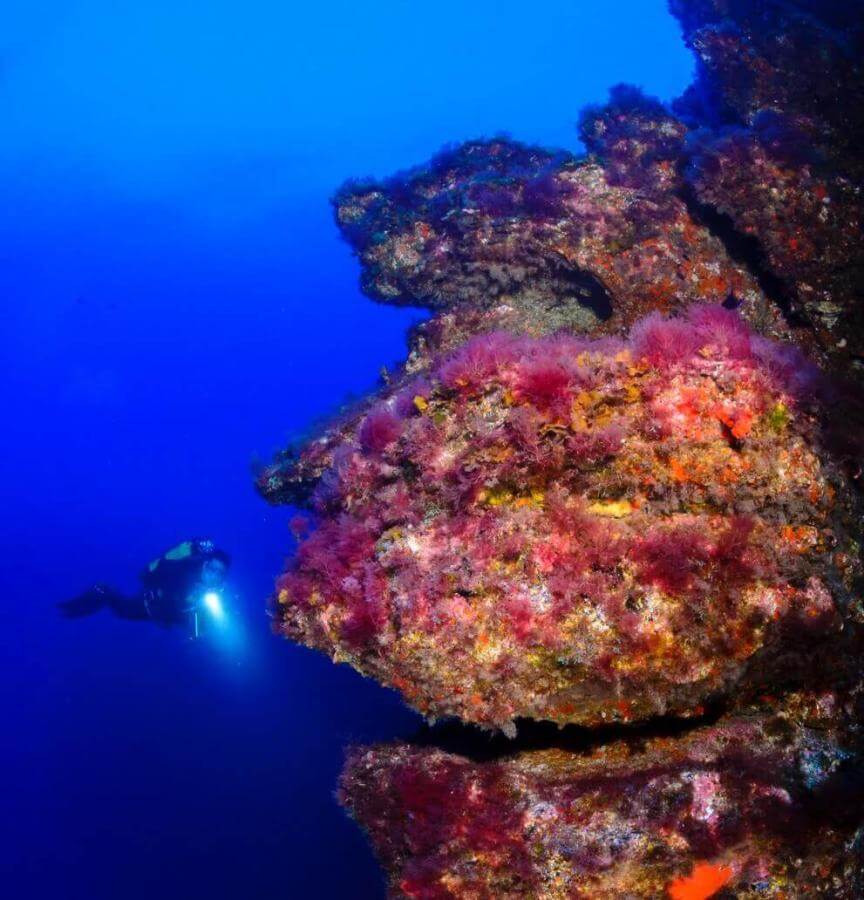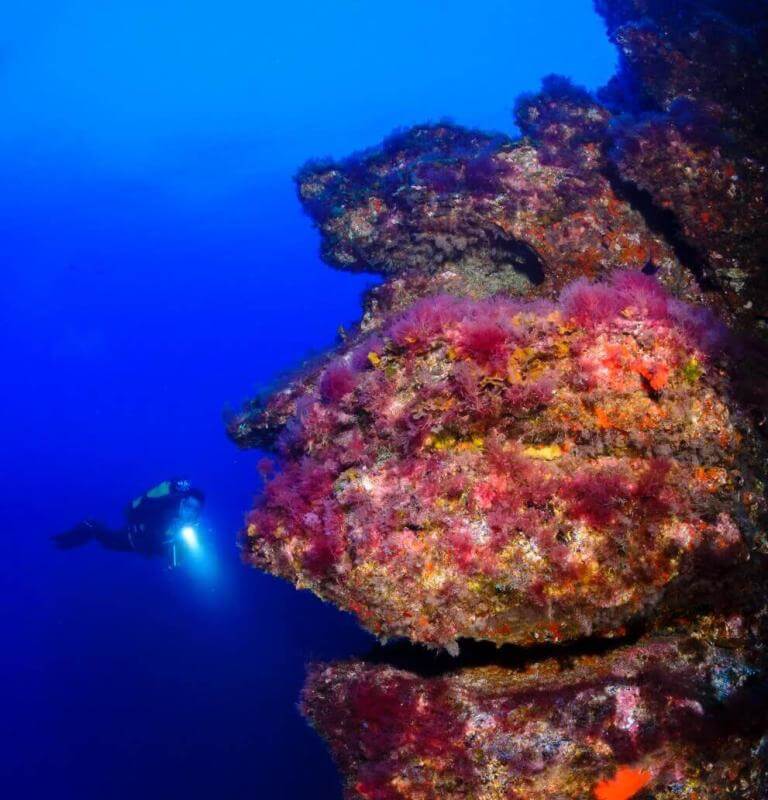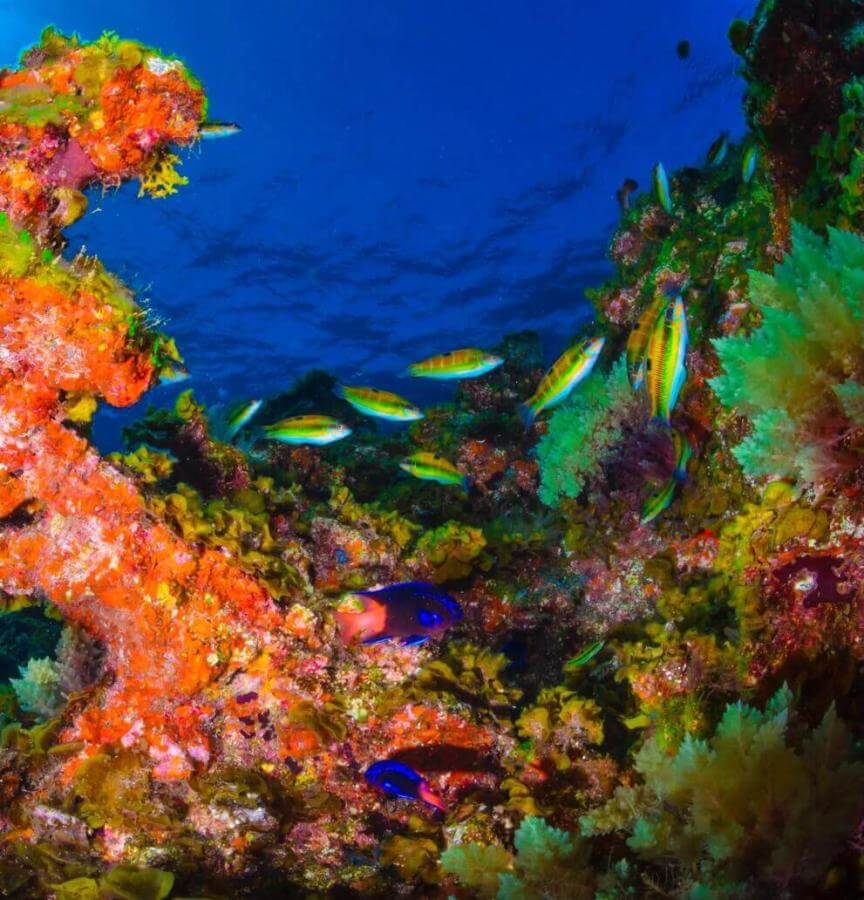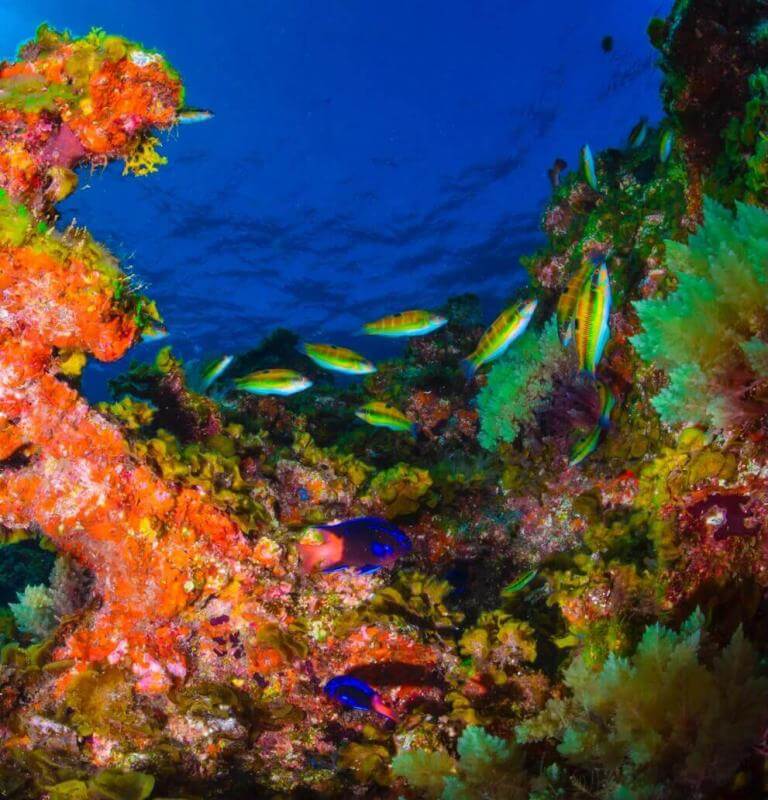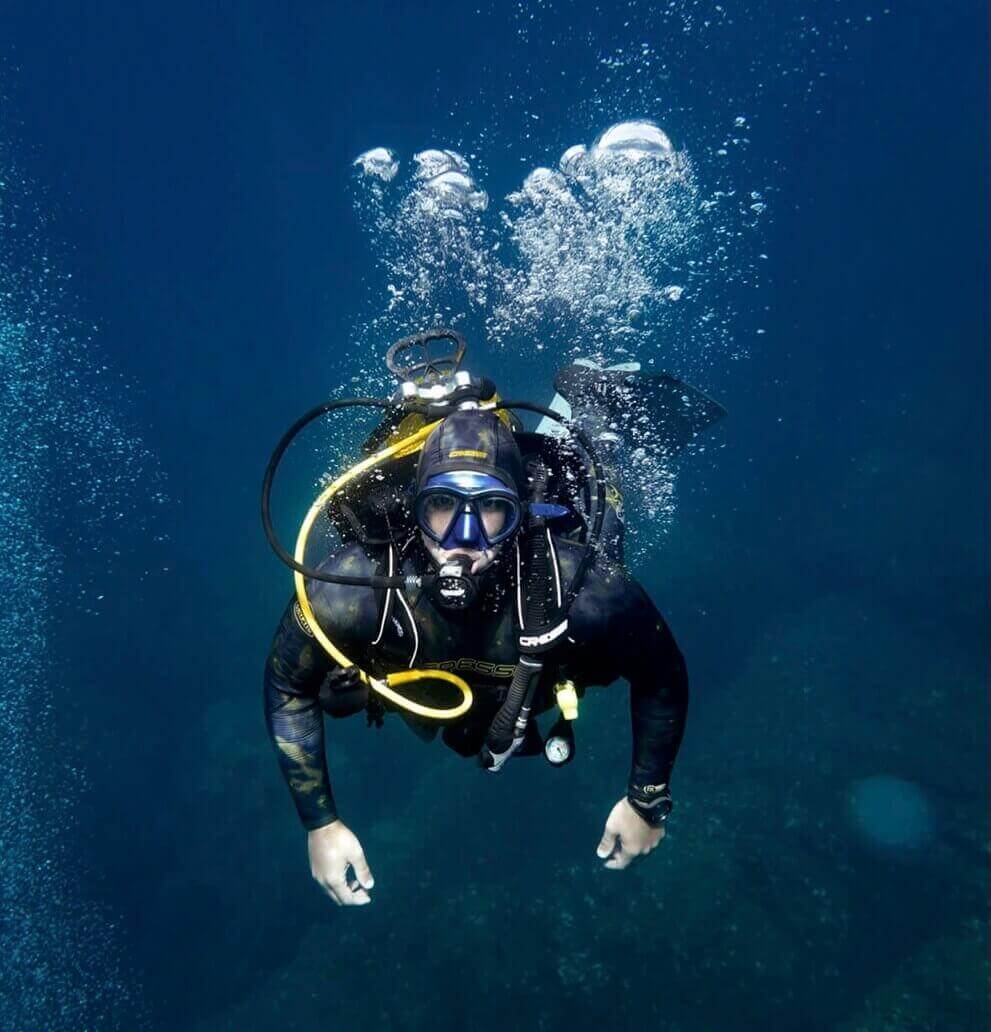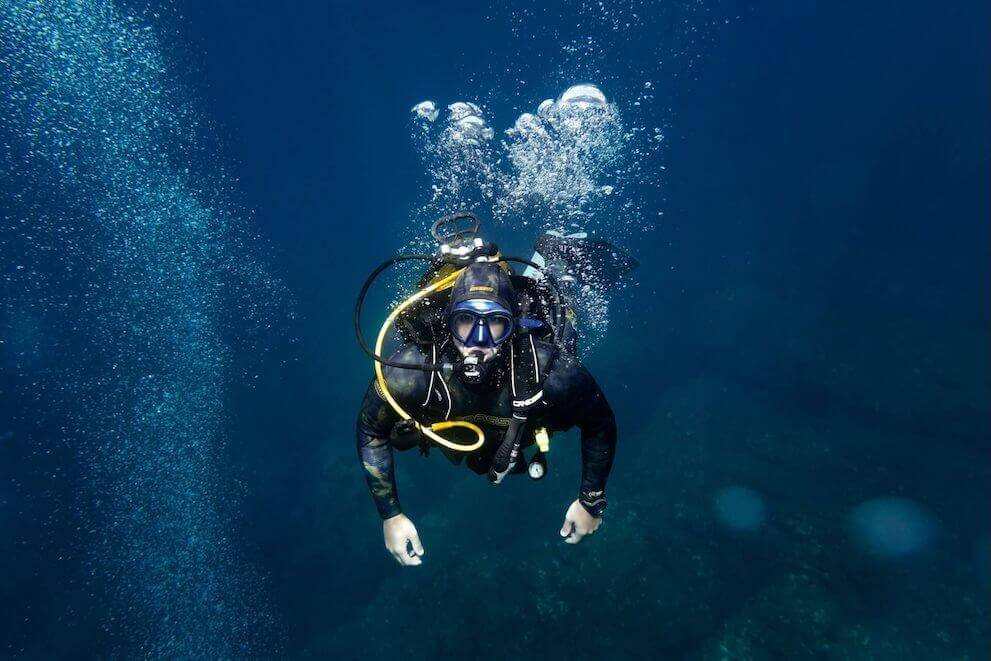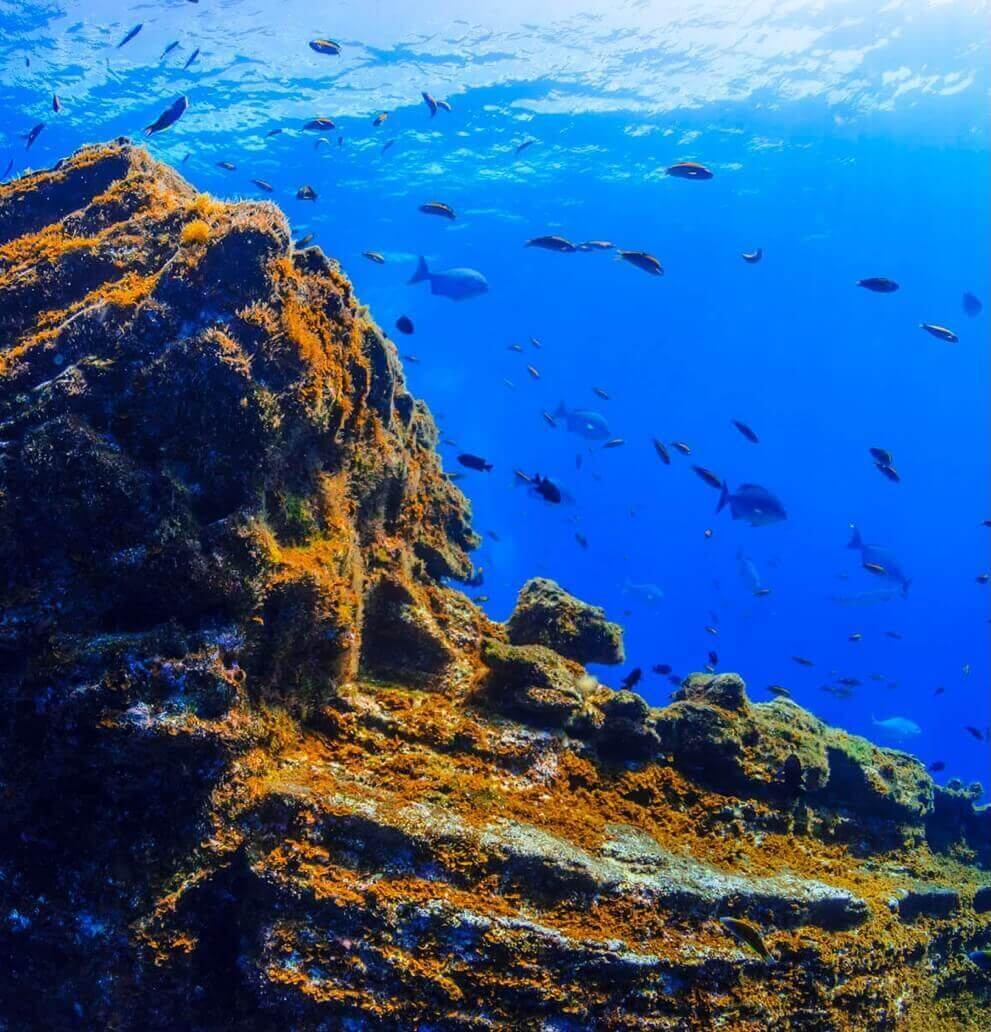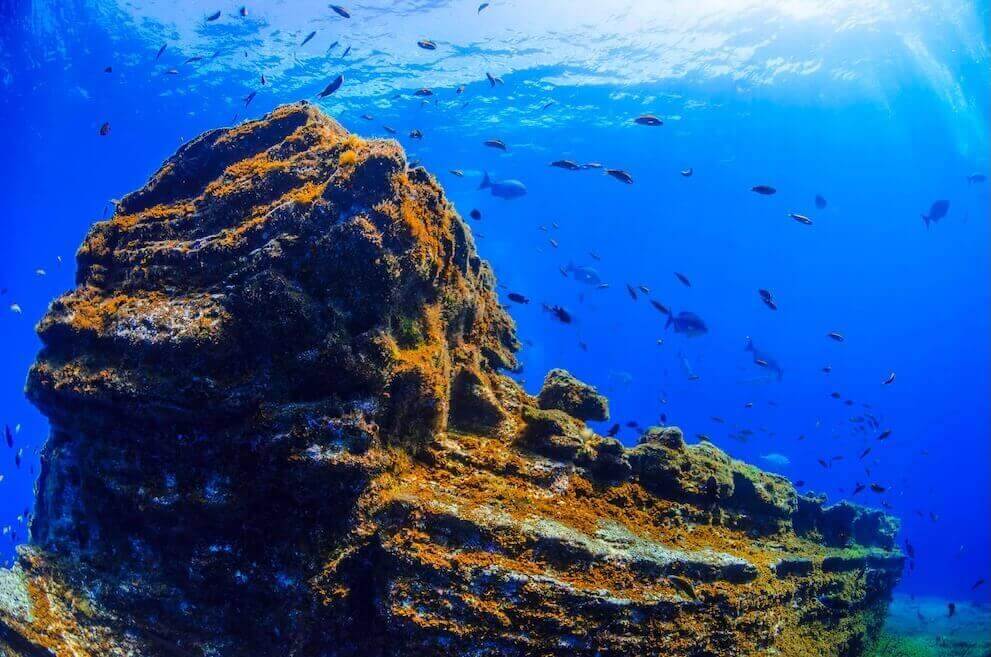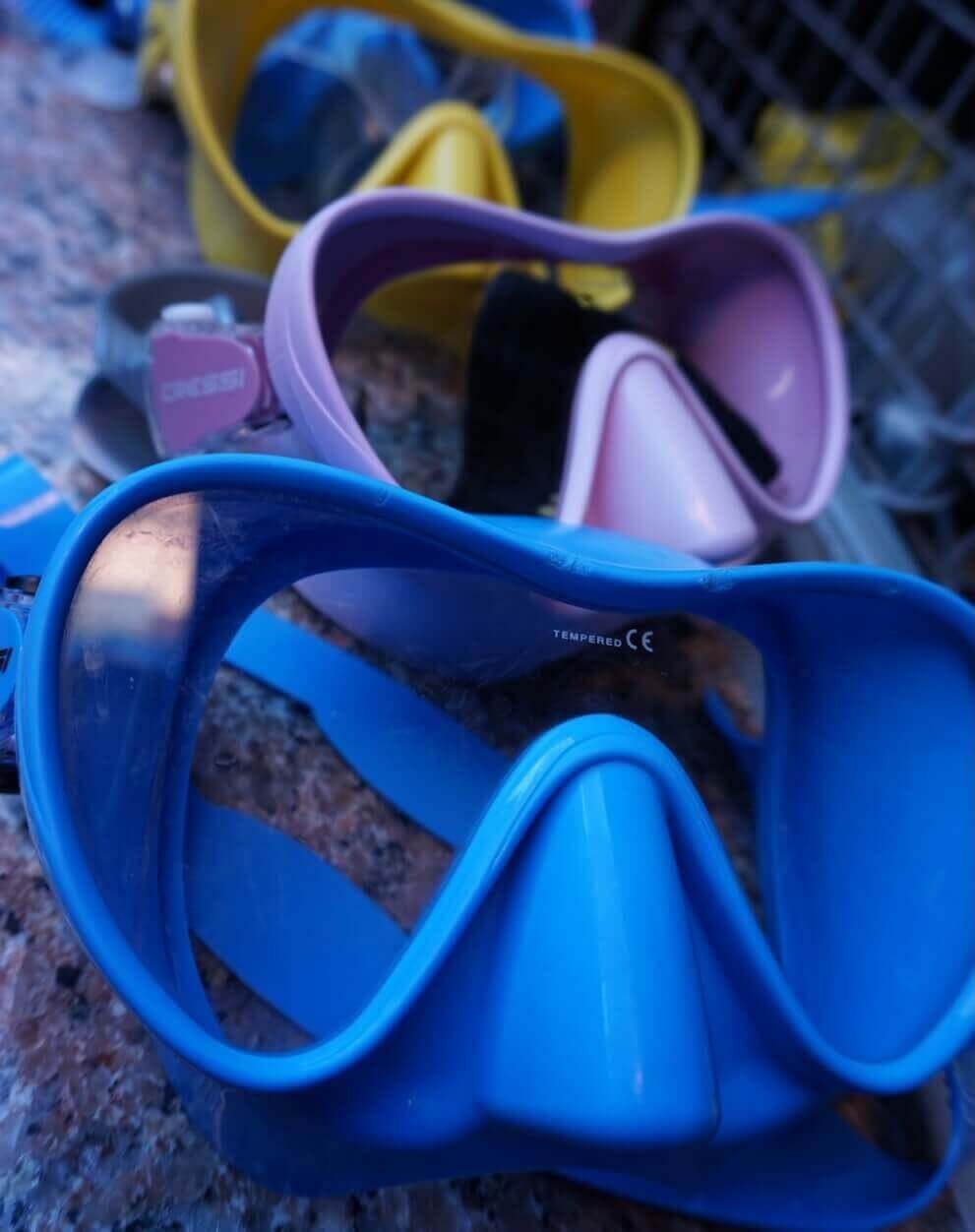The Canary Islands archipelago has a terrestrial surface area of around 7,500 square kilometres. This is minute compared to its marine space, which is 60 times bigger. Because of their singular oceanographic and climatic conditions, the Canary Islands can boast of a marine biodiversity and ecological wealth as unique as it is whimsical. And it is curious that it should be El Hierro, the smallest island, that shines out the strongest under the water.
here are many ways of enjoying the Atlantic in the Canary Islands, but diving is one that enables us to connect more deeply with the natural environment and find out what treasures it holds. An activity which, thanks to the good temperatures and bounty of the Canarian sea, can be enjoyed at any time of year, whatever your diving level.
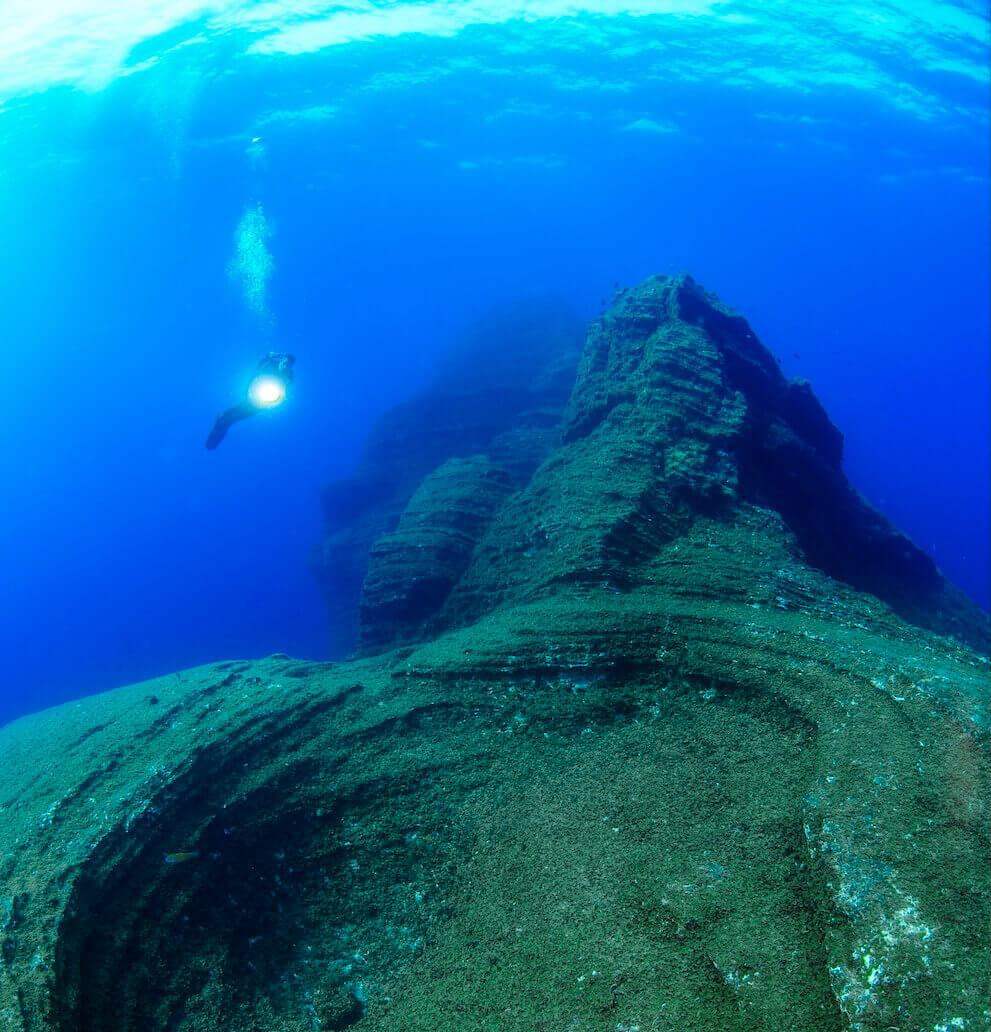
El Hierro, the jewel of the Canary Islands for divers
The waters around the island are a protected paradise. And not only because they house an important marine reserve. For decades now the local population has been jealously guarding the warm, clear waters here, where visibility can reach up to 30 metres or more. The area’s volcanic heritage has bestowed spectacular relief on it, although the craters, arches, crests and caverns are just the base on which a much greater spectacle has been built. Sea meadows and coral reefs have coloured in the seabed, making life flourish. A life that is now more dazzling than ever after the eruption of the underwater volcano of Tagoro, which in its current hydrothermal phase is the driving force behind intense aquatic regeneration.ue hoy está más resplandeciente que nunca tras la erupción del volcán submarino Tagoro, que en su actual fase hidrotermal está suponiendo el motor de una gran regeneración acuática.
An ocean of dive sites to choose from
The area around the island is surrounded by dozens of sites where one can penetrate into this underwater world. Many of them are located in the Mar de Las Calmas Marine Reserve, a huge natural bay that runs along the entire south-western coast and is famous the world over for its marine ecosystems and biodiversity.
On the other side of the island, the north-eastern coast also hides some very interesting diving areas. If the waters here permit, it is a great place for floating among schools of fish.
Visiting the world's biggest aquarium
Diving into the waters of El Hierro means entering the habitat of a large number of marine species. Some of them live here, and others simply stop over on their long migratory routes. But what they do have in common is that many of them are pelagic, so there’s no need to dive down to great depths to start being amazed.
The rich plant life is fascinating, although it is often eclipsed by the picturesque marine fauna of the Canary Islands. Barracudas, octopuses, Mediterranean parrotfish, ocean sunfish and large tunas co-exist alongside representative species of the area such as the tamboril espinoso (a fish), the Canary slipper lobster and the gallo azul (a fish). One can also see protected species like the angelshark, manta rays and other spectacular animals such as turtles, dolphins, Cuvier’s beaked whales and even some other whale species.
Closer to the bottom, there are even more amazing sights to see. In spaces reserved for professional and scientific diving, there are rare coral reefs and types of sponges that were hitherto unknown, as well as transparent fish with six eyes, never before filmed in their habitat, colonies of giant oysters with a life expectancy of several centuries,
Enjoying diving in El Hierro to the full
Another surprise the underwater life of El Hierro holds is that to immerse yourself in it, you do not need to have a diving licence. The shallowness of some areas means you can easily enter caves and reefs aided by just goggles, a snorkel and the help of a local guide, because you often have to go by boat and be familiar with the surroundings. Deciding where to go doesn’t have to be challenge with this type of dive, either. There are superb areas for snorkelling around El Hierro, both on the north-eastern coast and in the Mar de Las Calmas, and so sightings of marine fauna are guaranteed.
If you are looking for a more technical challenge, the island’s waters can also be a wonderful gateway to the world of apnoea diving, or an exciting challenge in volcanic waters. The various diving schools on the island offer everything from obtaining the necessary legal certifications to going on night-time free dives in a safe manner that respects the environment.
Waters that reveal a passion for photography
The submerged beauty of El Hierro can be easily verified using any online search engine or social media platform. The various pages of images shown are proof that beneath its waves lies a great place for practising underwater photography. The colourful sea bed combines with the warm light of the archipelago, allowing you to capture unique snapshots, with a little luck or skill. Maybe this is why, for years now, the island has been hosting the Open Fotosub El Hierro, a photography competition where professionals from around the world and amateurs compete to capture the best portraits.
